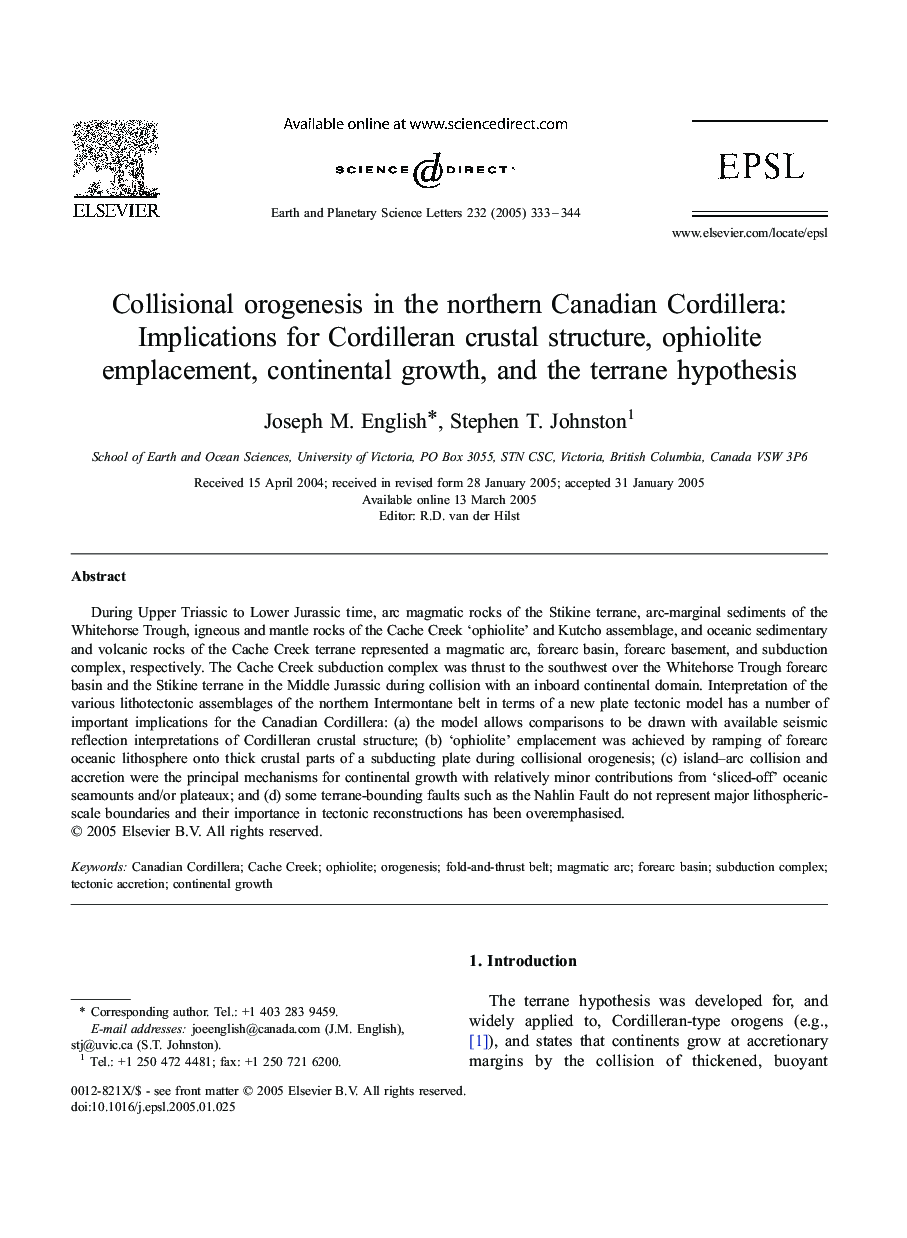| Article ID | Journal | Published Year | Pages | File Type |
|---|---|---|---|---|
| 9522468 | Earth and Planetary Science Letters | 2005 | 12 Pages |
Abstract
During Upper Triassic to Lower Jurassic time, arc magmatic rocks of the Stikine terrane, arc-marginal sediments of the Whitehorse Trough, igneous and mantle rocks of the Cache Creek 'ophiolite' and Kutcho assemblage, and oceanic sedimentary and volcanic rocks of the Cache Creek terrane represented a magmatic arc, forearc basin, forearc basement, and subduction complex, respectively. The Cache Creek subduction complex was thrust to the southwest over the Whitehorse Trough forearc basin and the Stikine terrane in the Middle Jurassic during collision with an inboard continental domain. Interpretation of the various lithotectonic assemblages of the northern Intermontane belt in terms of a new plate tectonic model has a number of important implications for the Canadian Cordillera: (a) the model allows comparisons to be drawn with available seismic reflection interpretations of Cordilleran crustal structure; (b) 'ophiolite' emplacement was achieved by ramping of forearc oceanic lithosphere onto thick crustal parts of a subducting plate during collisional orogenesis; (c) island-arc collision and accretion were the principal mechanisms for continental growth with relatively minor contributions from 'sliced-off' oceanic seamounts and/or plateaux; and (d) some terrane-bounding faults such as the Nahlin Fault do not represent major lithospheric-scale boundaries and their importance in tectonic reconstructions has been overemphasised.
Keywords
Related Topics
Physical Sciences and Engineering
Earth and Planetary Sciences
Earth and Planetary Sciences (General)
Authors
Joseph M. English, Stephen T. Johnston,
